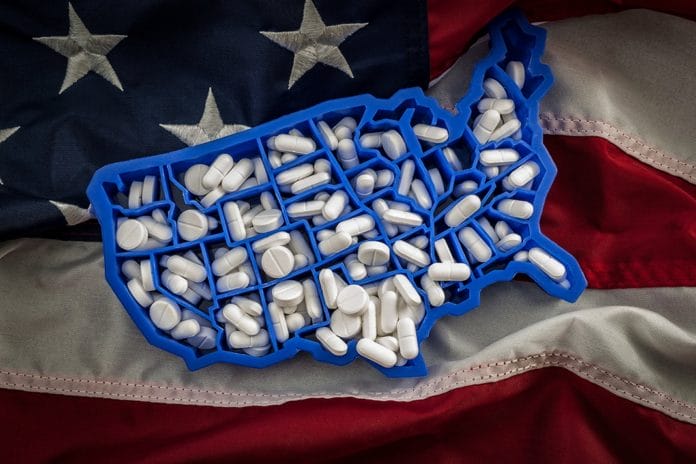According to the United States Department of Health and Human Services, every day more than 115 people in the United States die from overdosing on opioids.1 Although opioid addiction does not discriminate against age, many people who suffer from these addictions started using prescription opioid painkillers in their teenage years. Surprisingly, the group of health care providers responsible for prescribing more opioid pain relievers for teenagers than any other healthcare providers is dentists. Knowing this, it is important for dental professionals to acknowledge key facts about the opioid epidemic, like how and when opioid abuse increased, as well as identify what dental organizations can do, and are currently doing, to implement change in this destructive trend.
In the 1990’s, medical professionals were reassured by pharmaceutical companies the opioids being used for prescription pain relievers would not cause addiction in their patients. Because of this, healthcare providers began to prescribe these opioid pain relievers at higher rates because it was not understood that these prescription pain relievers could cause such addiction. Overall, this lead to accidental misuse of the medications and more patients incorporating opioid use into their lives, not knowing that the length and dose was highly addictive.2 This led to, and still to this day leads to, even the most well-intended patients becoming unintentionally addicted to the pills given to them by a medical professional with a legitimate prescription.
This addiction happens because of the nature of how the drug works on the brain. Dr. Patrick Rothwell, who is a professor in the Department of Neuroscience at the University of Minnesota, specializes in the neuroscience of addiction and says opioid drugs target a specific section of the brain. “Opioids mimic natural highs caused by chemicals synthesized normally in our own bodies. These endogenous opioids are naturally released when we’re happy, or seeing a loved one, or exercising,” Rothwell says. He continues to explain that opiate-based painkillers activate the same receptors when used, and these opioid receptors are found throughout the body, primarily in the brain, as well as the spinal cord. Once these receptors are activated, dopamine levels increase in the brain, and the effect can be euphoric and cause relief of pain.3
Over time, the body will build a tolerance to opioid pain relievers, which will then require higher doses of opioids to relieve the same amount of pain or to create a euphoric “high.” Neurologically, long-term use of opioids will actually change the pathways in the brain used for signaling other parts of the brain when using these drugs.3 Because opioids can have such a strong hold on the body physically, simply just stopping taking the pills is incredibly difficult. Severe fatigue, muscle pain, anxiety, and vomiting can all be symptoms of opioid withdrawal.
Unfortunately, it is not uncommon for people who misuse prescribed opioid pain relievers to turn to more powerful, cheaper options like the illegal opioids, heroin and fentanyl. Fentanyl, originally used for dying cancer patients, is 50 to 100 times more potent than morphine and can lead to respiratory depression, coma, and death. According to the National Institute on Drug Abuse, approximately 80% of people who use heroin first misused prescription opioids.4 This is a scary statistic and one that everyone should be aware of. It is imperative to understand opioids are incredibly powerful, and many Americans do not understand that addiction to opioids can happen to anyone, even people with no history of drug abuse.
Although opioid addiction can happen at any age, adolescents, in particular, have a 33% higher risk of addiction to opioids when exposed to prescription opioid pain relievers in their teenage years. This is detrimental for dentists to understand, as they prescribe more opioids to teenagers than any other healthcare provider. With 1 in every eight high schoolers using prescription opioid painkillers recreationally, it is imperative for dental providers to understand their role in this crisis.
Teenagers can obtain these pills from either their own wisdom teeth extractions or a family member’s surgery. This is not surprising, as a 2016 study conducted by the University of Pennsylvania’s Perelman School of Medicine and School of Dental Medicine, states nearly 100 million prescribed painkillers go unused after wisdom tooth extractions.5 If the painkillers are going unused, it is either because the patient was prescribed too many, or they didn’t feel enough to pain to render them useful. This puts the spotlight back on to the prescribers and asks the question, why are so many highly addictive opioid painkillers being prescribed to kids as a standard of care?
Dr. Harold Tu, D.M.D., M.D., director of the Division of Oral and Maxillofacial Surgery at the University of Minnesota (UNM) School of Dentistry, asked the same question. “I had an epiphany,” he said, after discussing the American opioid epidemic with his son in law, who is a renowned doctor and addiction specialist. “Dentists play a significant role in the opioid epidemic. And I came to recognize my own role and responsibility in affecting change.” With his new perspective, Tu established a non-opioid approach to pain management at the Minnesota School of Dentistry. Using non-steroidal, anti-inflammatories (NSAIDs) as the first analgesic, he is trying to show dental students that opioids should not be the first line of pain relievers give to patients.5 Research published by the Journal of the American Dental Association shows an acetaminophen-ibuprofen combination provides equal pain relief, without the risk of addiction.6
Although some patients are unable to take NSAIDs due to medical reasons, the provider will dispense a very small dose of painkillers which will reduce the number of unused pain pills. Because of this new protocol, UNM dental prescriptions for opioid painkillers has decreased significantly. Additionally, UMN dentists note there is not a significant amount of requests for additional pain medication, which concludes the new approach of non-opioid pain management the school has implemented is working. Tu calls out to all dental professionals by saying “I think everyone is aware of the devastating impact addiction has on society. This should force us to rethink our use of opioids as the primary treatment for acute pain.”
In conclusion, steps are being made in the right direction as the dangers of opioid addiction as the opioid epidemic continues to escalate in America. The American Dental Association now includes in their policies new protocols enforcing prescribing providers to take mandatory continuing education on preventing chemical dependency and prescribing opioid pain relievers, as well as, supporting the CDC’s statutory limits on opioid dosage not exceeding seven days for acute pain treatment.7
While these steps are essential for cutting down the number of opioid drugs prescribed by dentists, awareness of the dangerous nature of opioid addiction continues to need attention. Opioid addiction disregards economic status as well as age, and dental professionals can help by further educating themselves, as well as patients, about the dangers of opioid abuse.
SEE ALSO: Science Shows Dental Pain Better Treated with Over-the-Counter Pain Relievers than Opioids
DON’T MISS: Oral Implications of Frequent Marijuana Use
References
- CDC/NCHS, National Vital Statistics System, Mortality. CDC Wonder, Atlanta, GA: US Department of Health and Human Services, CDC; 2017. https://wonder.cdc.gov.
- Van Zee A. The Promotion and Marketing of OxyContin: Commercial Triumph, Public Health Tragedy. Am J Public Health. 2009;99(2):221-227. doi:10.2105/AJPH.2007.131714.
- Mchenry, Erin. “Why Are Opioids Addictive?” Health Talk, 27 Apr. 2017. Retrieved from www.healthtalk.umn.edu/2017/04/27/why-are-opioids-addictive/.
- Muhuri PK, Gfroerer JC, Davies MC. Associations of Nonmedical Pain Reliever Use and Initiation of Heroin Use in the United States. CBHSQ Data Rev. August 2013.
- “100 Million Prescription Opioids Go Unused Each Year Following Wisdom Teeth Removal – PR News.” Penn Medicine, 22 Sept. 2016. Retrieved from www.pennmedicine.org/news/news-releases/2016/september/100-million-prescription-opioi.
- Moore, Paul DMD, PhD, and Hersh, Elliott DDS, MS, PhD “Combining Ibuprofen and Acetaminophen for Acute Pain Management after Third-Molar Extractions.” Journal of the American Dental Association , 23 Aug. 2013. Retrieved from https://jada.ada.org/article/S0002-8177(14)60509-2/abstract
- “Policies and Recommendations on Substance Use Disorders.” Home – American Dental Association. Retrieved from https://www.ada.org/en/about-the-ada/ada-positions-policies-and-statements/substance-use-disorders.











